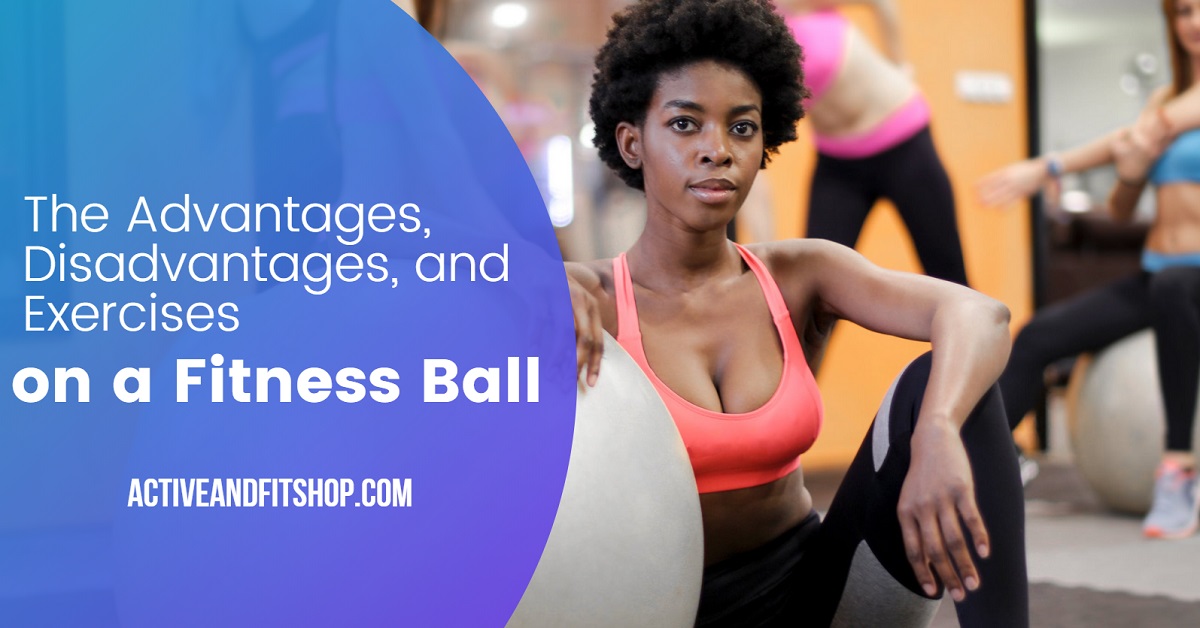
Many people want to improve their fitness, lose weight, and exercise more, but they may not have the time, money, or access to go to a gym or a fitness studio. That is why home fitness equipment is appealing, as it allows people to work out at their own pace and schedule. Among the various options for home fitness equipment, the fitness ball exercises stand out as a versatile and effective tool that can provide a total workout for the whole body.
A fitness ball is a large, inflatable ball that can be used for various exercises that target different muscle groups and aspects of fitness, such as strength, balance, flexibility, and core stability. It is also widely used in physical therapy for treating and preventing back pain, as it helps to improve posture, alignment, and spinal mobility. Investing in a fitness ball can give you a unique home workout experience that is fun, challenging, and beneficial for your health and wellness. By embracing this equipment, you can open the door to a holistic workout that suits your needs and goals.
Unleashing Potential with Fitness Ball Exercises
Whether you’re aiming to enhance strength, flexibility, or overall fitness, the fitness ball exercises provides a versatile and effective solution. Join the growing community of enthusiasts who have harnessed its potential to elevate their home exercise routines. Make the fitness ball your ally in achieving fitness goals, and discover a new dimension of personalized and therapeutic workouts in the comfort of your home.
Exploring the Many Roles of the Elastic Rubber Fitness Ball
Ranging from 55 to 85 centimeters in diameter, a fitness ball, made of elastic rubber, serves in exercise and physical therapy. Also known as an exercise ball, Pilate’s ball, gym ball, therapy ball, balance ball, body ball, yoga ball, sports ball, or Swiss ball, its versatility makes it a valuable tool for various fitness routines and therapeutic applications.

The major benefit of this exercise is that it enables the body to respond to the ball’s instability while maintaining balance and engaging more muscles. Remember that the muscles are strengthened when struggling to maintain balance. The core muscles of the body, back muscles, and abdominal muscles are the targets of the fitness ball programs of exercises.

Embrace the non-stop excitement of exercises—a dynamic workout that challenges your stamina, patience, perseverance, and self-discipline. This engaging form of exercise targets the entire core, ensuring a comprehensive workout for optimal results. Elevate your fitness routine with the constant thrill of pushing your limits and achieving a well-rounded, rewarding workout experience.
Core Engagement Mastery
A fitness ball is effective because of its rounded shape. It can create instability and induce your core body muscles to work. Compared to floor crunching, the muscles that are only working are the upper abs. Still, when you do the crunching on a fitness ball, the core muscles, including the abs muscles, back muscles, pelvic muscles, and hip muscles, are working together to help you stay on the ball.

Explore the versatility of fitness balls with push-ups, varying the challenge by placing your hands on the ball and feet on the floor, or vice versa. Widening your stance on the ball enhances stability, while bringing your feet closer together intensifies the difficulty. This dynamic exercise engages multiple muscle groups, offering an effective way to enhance strength, stability, and overall fitness in your home workout routine.
Balancing Act
While the Balancing Act offers numerous advantages, caution is needed to avoid overusing pitfalls. Some strength coaches warn of injury risks, with around 70 percent of exercises deemed ineffective. Despite concerns, therapists still prescribe fitness balls for treating back pain, emphasizing the importance of balanced usage and professional guidance in maximizing benefits while minimizing potential drawbacks.

Incorporating fitness ball exercises into your fitness program can mean surpassing all the difficult levels involved during the exercise. Each requires support from your stomach muscles and back to help keep the trunk muscles firm. More often than not, a fitness ball exercises is good for people who have lower back pain. Other uses include developing overall strength and control of the body’s core muscles, increasing the strength of the back and abdominal muscles, learning proper posture and body mechanics when lifting objects, and increasing mobility of the lower back.





